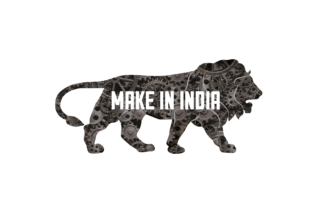Packaging design is an essential part of marketing and branding for any product. A well-designed package can capture the attention of potential customers, communicate brand identity, and even influence purchasing decisions. In this article, we will explore the art of package design and offer tips for creating memorable packaging.
Understanding the purpose of packaging design
Before we dive into the tips and best practices for package design, it’s essential to understand the purpose of packaging design. First and foremost, the packaging’s primary function is to protect the product during transportation and storage. However, packaging design goes beyond just function. The package is the first point of contact between the customer and the product. It sets the tone for the brand experience and can influence the customer’s perception of the product’s quality, value, and purpose.
A well-designed package can help differentiate a product from competitors and communicate its unique selling points. It can also create a sense of anticipation and excitement, encouraging customers to make a purchase.
Key elements of package design
There are several key elements of package design that must be considered when creating memorable packaging:
- Brand identity: The packaging must align with the brand’s visual identity and values. This includes typography, color palette, and overall design aesthetic.
- Product information: The packaging should clearly communicate the product’s purpose, features, and benefits. This information can be conveyed through text, icons, or imagery.
- Functionality: The package must be functional and easy to use. It should be easy to open and close, store, and transport.
- Environmental impact: In today’s world, customers are becoming increasingly concerned about the environmental impact of packaging. Sustainable packaging solutions should be considered whenever possible.
Tips for creating memorable packaging
Now that we have an understanding of the key elements of package design let’s dive into the tips for creating memorable packaging.
- Consider the customer journey: The packaging design should take into account the entire customer journey, from initial awareness to post-purchase. The design should create a seamless and cohesive brand experience at every touchpoint.
- Keep it simple: The most memorable packages are often the simplest. A cluttered and complicated design can be overwhelming for customers and detract from the product’s core message.
- Use color strategically: Color is a powerful tool in package design. It can evoke emotion, communicate brand values, and create visual interest. However, it’s essential to use color strategically and not just for the sake of it.
- Be innovative: Innovative packaging designs can capture the attention of customers and create a sense of excitement around the product. Consider unique shapes, materials, or interactive elements.
- Focus on functionality: While design aesthetics are essential, functionality should never be overlooked. The package must protect the product and be easy to use for the customer.
- Tell a story: A package can communicate more than just the product’s features and benefits. It can tell a story about the brand’s values, heritage, or purpose. This can create an emotional connection with the customer and increase brand loyalty.
Examples of memorable packaging designs
To illustrate the tips and best practices discussed in this article, let’s take a look at some examples of memorable packaging designs:
- Apple – Apple’s packaging is simple, elegant, and functional. The clean design aligns with the brand’s values, and the use of high-quality materials communicates the product’s premium status.
- Coca-Cola – Coca-Cola’s iconic bottle design is instantly recognizable and evokes feelings of nostalgia and happiness. The unique shape and contour are memorable and help differentiate the brand from competitors.
- Method – Method’s packaging is not only beautiful but also sustainable. The use of recycled plastic and unique shapes create a sense of innovation and commitment to the environment.
- Glossier – Glossier’s packaging is simple yet playful, with pastel colors and whimsical illustrations. The packaging aligns with the brand’s mission to create approachable and accessible beauty products.
- Nike – Nike’s shoebox design is instantly recognizable and aligns with the brand’s focus on performance and innovation. The use of bold typography and bright colors creates a sense of energy and excitement.
These examples illustrate the importance of aligning packaging design with brand identity, focusing on functionality, and creating memorable designs through simplicity, color, and innovation.
Conclusion
Packaging design is a critical aspect of marketing and branding for any product. A well-designed package can capture the attention of potential customers, communicate brand identity, and even influence purchasing decisions. By considering the key elements of package design and following best practices, businesses can create memorable and effective packaging that enhances the overall brand experience.




